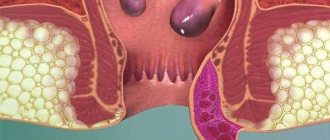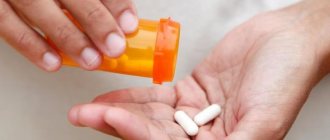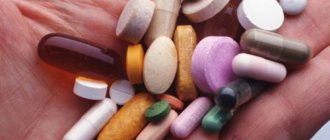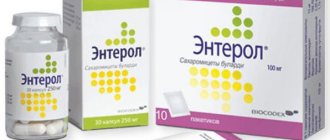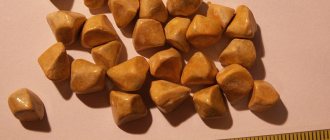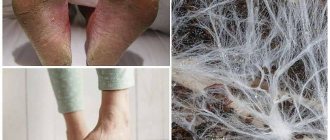Proctological diseases, such as perirectal abscess, are often found in people who lead a sedentary lifestyle. Antibiotics for paraproctitis are rarely used. They can be used as an adjuvant that will help eliminate inflammatory processes in the human body. The disease itself is an infection of the perirectal tissue with further inflammation.
Local antibiotics
Such drugs are treated only at the site of their application. Local antibiotics are used both after and before surgery.
Such remedies prevent bacterial complications and speed up healing. For paraproctitis, ointments or suppositories can be used.
The former are usually prescribed for treating postoperative wounds during dressings. The latter are more often used when it is impossible to perform an operation, in preparation for surgery, or in the absence of the opportunity to seek medical help.
Antibacterial suppositories:
- Proctosedyl. In these suppositories, framycetin is the main active ingredient. It is active against streptococci, Klebsiella, staphylococci, pseudomonas, enterobacteria and other microorganisms. In addition, the product contains painkillers and hormonal components.
- Olestesin. The antibacterial effect of the drug is provided by sodium sulfonamide etazol, and this substance also has an antifungal effect. In addition, the drug contains anesthesin, which has an analgesic effect, and sea buckthorn oil, which has anti-inflammatory, healing and hemostatic properties.
Antibacterial ointments:
- Levosin. This is a combination drug that contains chloramphenicol, methyluracil, sulfadimethoxine and trimecaine. The drug has antibacterial, analgesic and anti-inflammatory effects.
- Fuzimet. The ointment uses fusidine and methyluracil as an antibiotic, which is also included in its composition and has a regenerating effect.
- Levomekol. Chloramphenicol provides the ointment with an antibacterial effect, while methyluracil promotes rapid healing and tissue restoration.
After surgery for chronic or acute paraproctitis, dressings with such ointments must be carried out daily for at least 3 weeks. First, the wound is treated with any antiseptic solution, for example, hydrogen peroxide or chlorhexidine. After which it is dried and a thin layer of ointment is applied to the wound surface. Next, the wound is closed with gauze folded in several layers.
When using antibiotics for paraproctitis, it is worth remembering that using only these drugs it is impossible to completely cure the disease.
Of course, such drugs can somewhat reduce the inflammatory process, but they cannot directly affect the contents of the abscess. Moreover, using antibiotics without a doctor’s prescription can only worsen the situation.
Elana Ovchinnikova
Hello! Please tell me a method for treating paraproctitis with antibiotics, I have already had operations to open paraproctitis several times, but they have never prescribed antibiotic treatment, they only do dressings, I encounter this problem several times a year, they always operate. After the operation I am in the hospital, our doctors don’t really say anything, not about prevention, not about treatment. They opened it 4 or 5 times already, I don’t remember exactly. Currently, I again feel that the process is beginning, but the swelling has not yet appeared. I take hot baths (I read this on the net), and it hasn’t gotten worse yet. Thank you.
Antibiotics for paraproctitis are rarely used. This is due to the fact that this disease can only be cured through surgery. Although the use of antibiotics in some cases is still necessary.
How effective are suppositories?
For local treatment of paraproctitis, suppositories are used. They work at the site of inflammation, useful substances enter the tissues immediately. When treating a disease with suppositories, it is necessary to place the drug as deeply as possible and wait about 30-40 minutes for the suppository to dissolve and begin to act. It is better to do this lying down so that the medicine acts directly on the site of the disease and does not spread. As a supplement to suppositories, you can use cotton swabs soaked in medicinal ointments, such as Levomekol, Methyluracil, and ichthyol ointment.
To achieve the greatest effect, it is necessary to treat the disease comprehensively. The patient must use not only medications, but also change habits - move more, because half of the diseases that affect the occurrence of paraproctitis appear due to a sedentary lifestyle. You need to change your diet - eat less food that can lead to constipation or diarrhea, give up bad habits and do not neglect the rules of personal hygiene.
Therapy of paraproctitis with suppositories is effective at the initial stage of the disease. When the disease is in an advanced stage, only surgery will help. Suppositories are also used before preparing for surgery or immediately after it.
Baths with the addition of mumiyo
Mumiom baths have proven themselves in the treatment of chronic proctitis. An additional advantage of this method is that, in addition to a pronounced analgesic and anti-inflammatory effect, the drug has the ability to activate local immunity. To prepare the solution, you need to crush 10 mummy tablets and fill them with warm water. The duration of the manipulation is 15-20 minutes (until the liquid cools down). The course of treatment is 10-15 procedures.
Baths with milk and garlic
For a sitz bath, you can use the following remedy: boil 2 liters of milk, add 4 cloves of garlic, 2 medium onions and boil for a few more minutes. This solution can be used for water procedures, but first you need to cool it a little to a comfortable temperature.
In order to enhance the therapeutic effect, the patient should be wrapped in a warm blanket or towel. This will allow you to maintain the desired temperature for as long as possible, as a result of which you can quickly achieve a pronounced positive result from the treatment.
Since sitz baths are not very comfortable, you can use an alternative option - taking a bath with the addition of medicinal ingredients.
To prepare the infusion, all components must be mixed in equal parts, take 50 g of the mixture and add 500 ml of hot water. Place the container on the fire, bring to a boil and simmer for 30-40 minutes. Strain the healing infusion and add to the bath. The patient should remain in the water for at least 15-20 minutes.
Ordinary tree resin has excellent anti-inflammatory properties. A healing solution must be added to a bath of warm water. To prepare it, pour 50-70 g of ash into 6-7 liters of water, boil and keep on low heat for 30-40 minutes.
After cooling, the product must be filtered and added to the bath. The duration of the relaxing procedure is 20-30 minutes. The therapeutic course is 7-10 sessions (until the patient’s condition improves).
List of drugs
Among the effective drugs against paraproctitis, doctors call “Anuzol” - suppositories have an antiseptic and anti-inflammatory effect, “Ultraproct”, which contains hormones and is a good pain reliever. “Posterisan” is an immunostimulant that saturates damaged tissues with vitamins for speedy regeneration. "Proctosedyl" is a hormonal and antibacterial drug. "Olesthesin" contains sea buckthorn oil and an antibiotic. Ichthyol suppositories can be used to treat children. You should not carry out independent treatment and use suppositories if you have only symptoms, but not a confirmed diagnosis. Only a doctor should prescribe suppositories; they should also be used under the supervision of a doctor.
Treatment of paraproctitis in children under one year of age
In most cases, paraproctitis develops in infants, 60% of patients are infants under 6 months, 20% are from 6 to 12 months, the remaining percentage occurs in children older than one year. After a year, the risk of developing this disease decreases significantly.
As in adult patients, treatment of paraproctitis in children will be most effective with surgical intervention. However, in some cases conservative therapy is indicated. For these purposes, the following manipulations are carried out:
- Warm sitz baths with a weak solution of potassium permanganate 2-3 times a day. Children who cannot yet sit independently are bathed in a manganese solution.
- Careful care of the skin around the anus, timely removal of feces.
- Antibacterial drugs are taken according to certain indications and as prescribed by a specialist.
Conservative treatment of paraproctitis in infants is recommended only until the timing of the operation is finally established. Treatment of children with an acute form of the inflammatory process is carried out only in a medical institution; home therapy is strictly contraindicated.
Causes of paraproctitis
The appearance is promoted by mechanical damage to the anal area (anal sex), diseases of the rectum (anal fissures, hemorrhoids), improper body hygiene, frequent bowel disorders, chronic diseases and other factors.
A surgeon or proctologist treats and diagnoses paraproctitis. In particular, surgical intervention is performed, but in the early stages of the disease, ointments and suppositories can be used for medicinal purposes.
Medicines for the treatment of paraproctitis in adults
Ointments for paraproctitis
in adults they have a complex effect: wound healing, immunomodulatory, analgesic, anti-inflammatory.
Highly effective medical products: Balsamic liniment according to Vishnevsky, Proctosedyl, Locacorten-N (Lorinden).
Vishnevsky ointment
Ointment Balsamic liniment according to Vishnevsky
For paraproctitis it is a combination medicine. Has several effects at once: disinfects, relieves inflammation, regenerates damaged areas
It must be used with caution, as there is another property - it promotes the purulent process.
Vishnevsky ointment for paraproctitis is used according to the instructions. Apply to a gauze bandage and apply to the diseased area, with a piece of cellophane placed on top. This will enhance the impact effect. This warming compress is worn for up to 12 hours. Then the skin is removed and treated with an antiseptic; it will help get rid of the very unpleasant odor of the ointment.
The duration of treatment depends on the healing process.
There are no special contraindications for use, with the exception of allergic intolerance to the components contained.
Proctosedyl
The drug contains corsticosteroid hormones and the antibiotic substance framycetin. Blocks the inflammatory process, relieves pain, prevents blood clotting and the formation of blood clots, relieves swelling.
This medicine is used for diseases such as hemorrhoids, anal fissure, eczema and itching in the anal area. Contraindications are inflammatory abscesses, pregnancy and lactation, individual intolerance, infancy, high blood pressure.
Side effects such as burning, allergic reactions, and rectal dryness are possible.
Proctosedyl
Proctosedyl is applied to the affected surface twice a day. When treating internal inflammation, use a special nozzle or a cotton swab to inject the required amount of ointment into the anus. The duration of treatment should not exceed a week.
Locacorten-N (Lorinden)
Locacorten-N (Lorinden) is an anti-inflammatory agent that saturates the skin with beneficial substances, while giving it firmness and elasticity. Contains glucocorticosteroids that block the infectious process. Lorinden should not be used by pregnant women, varicose veins, severe skin abscesses, mucous membranes, or skin cancer.
The ointment is applied in a thin layer to damaged areas up to 2-3 times a day. There is a possibility of side effects: itching and burning, dryness and discoloration of the area. Applying a gauze compress is not necessary. Can be used for preventive purposes once a day for a week. The course of treatment is 2 weeks.
Suppositories for paraproctitis
used as one of the methods of treatment: rehabilitation therapy after surgery, contraindications to surgery due to acute diseases, in the presence of hemorrhoids and anal fissures. Suppositories based on propolis, Posterizan, have proven themselves to be the best.
Suppositories with propolis
– a natural homeopathic preparation from bee products. Used in complex therapy for genitourinary infections, proctological and gynecological diseases.
When introduced into the rectum, under the influence of body temperature, the candle melts, and the effect begins to manifest itself: antimicrobial, restoring damaged tissue. In addition, it prevents the development of blood clots and malignant neoplasms.
Propolis has the ability to remove harmful chemicals from the body and prevent allergic manifestations. Dosage: 1 piece per day. 2 times a day, for 10 days. To consolidate the results obtained, you should undergo 2 courses of treatment, taking a two-month break.
Do not use candles if you are intolerant to honey products, manifested by allergies.
Posterisan
Posterisan
Highly effective suppositories for paraproctitis in adults Posterisan express a wide spectrum to reduce proctological symptoms. They improve the permeability and tone of blood vessels, regenerate the mucous layers of the skin, and improve immunity.
Use one suppository twice a day for 2-3 weeks. It is not prohibited to use during pregnancy and lactation. There are adverse reactions in the form of an allergy to phenol.
Description
Paraproctitis is a disease characterized by purulent melting of the tissues surrounding the rectum.
Through the ducts of the glands, which are located in the anus, the infection penetrates from the lumen of the rectum into the surrounding tissues, resulting in inflammation. Subsequently, an abscess (ulcer) is formed, the size of which depends on the protective properties of the body.
The etiological factor in the development of paraproctitis is intestinal microflora (staphylococci, streptococci, enterococci and others). The penetration of infection provokes the presence of rectal fissures and various injuries to the mucous membrane. In addition, provoking factors are stool disorders (constipation or diarrhea), the presence of hemorrhoids, inflammation of the prostate gland, and previous rectal surgery.
Based on the location of the abscess, the following forms of the disease are distinguished:
- Subcutaneous paraproctitis (located directly under the skin);
- Submucosal paraproctitis (located under the mucous membrane of the rectum);
- Deep. This form of the disease is in turn divided into:
- ischiorectal paraproctitis (located near the levator ani muscle);
- pelviorectal paraproctitis (located deep in the pelvis);
- rectal paraproctitis (located behind the rectum).
According to the course of the disease there are:
- Acute paraproctitis is a newly diagnosed disease;
- Chronic paraproctitis occurs with alternating periods of exacerbation and remission.
When the first signs of the disease appear, you should immediately consult a doctor, since neglect of your condition can lead to the development of the following complications:
- the transition of an acute form of the disease to a chronic one, which in most cases is accompanied by the formation of a fistula canal that connects the anus from the inside and the skin from the outside. In addition, as is known, chronic paraproctitis is much more difficult to treat;
- breakthrough of the abscess into the surrounding tissues with the formation of phlegmon, which, unlike an abscess, has no boundaries;
- development of peritonitis (inflammation of the peritoneum (the membrane lining the abdominal cavity and internal organs located in the abdominal cavity)) or pelvioperitonitis (inflammation of the pelvic peritoneum).
To avoid the development of these complications, you should immediately seek help from a specialist. With timely treatment, the prognosis for paraproctitis is favorable.
What is paraproctitis
This is an inflammation of the fatty layer of fiber in the rectum of the anus. It occurs in two forms: acute (just appeared) and chronic (untreated illness).
Paraproctitis in children
The mechanism of development of paraproctitis is as follows. In the anus there are special anal glands and mucous membrane that perform protective functions. Once bacteria invade the anus, they enter the tissue. Here they begin to exist, causing inflammation with the formation of an abscess. The size depends on the protective power of the immune system.
Adults often become infected with E. coli, and children with staphylococcus. Children are susceptible to the disease due to the abnormal structure of the ducts of the anal glands . It is quite difficult to suspect the disease; the main symptom is pain during bowel movements, accompanied by a temperature above 37.5 degrees.
The abscess can be located both on the skin surface of the anus and deep in the tissues. Because of this, the following signs appear: increased temperature, fever, spasms in the rectum and perineum, redness and swelling of the damaged area. If you do not immediately pay attention to these signs, the temperature becomes high, and the excretion of urine and feces becomes difficult.
Consequences
- Melting of the walls of the rectum or vagina (pus);
- The action of pus on the urethra;
- Transition of infection to the pelvic area or other cellular spaces;
- Insufficiency, deformation and disruption of the anal canal;
- Opening of the abscess into the abdominal cavity with the formation of peritonitis.
Depending on the size and location of the abscess, paraproctitis occurs:
- Subcutaneous paraproctitis is a common type, 50% of patients suffer from this form. It is characterized by severe, sharp, sharp pain that occurs while walking, straining, going to the toilet, or touching. The patient's temperature rises and body chills occur. Paraproctitis is accompanied by severe swelling. The anal ring and rectum are noticeably deformed in appearance.
- Ischio-rectal paraproctitis is a type that affects 40% of patients. Accompanied by noticeable symptoms: insomnia, deterioration of health, fever, chills. The abscess is located in the anterior wall of the rectum, which causes pain that intensifies with movement, defecation, straining, and coughing. After a week of inactivity, the patient experiences severe swelling, leading to asymmetry of the buttocks, the semilunar fold and intestinal folds are smoothed out. The abscess in this phase is examined rectally.
- Submucosal paraproctitis - affects 5% of patients with acute paraproctitis. The pain is tolerable; upon contact with the hands, painful discomfort occurs. Recovery occurs if the abscess breaks out on its own.
- Pelvic-rectal paraproctitis is a severe form, affecting 5% of patients with an acute form of the disease. To the symptoms, fever, chills, malaise, headache, aching joints, lack of appetite and pain in the lower abdomen are added. If medical assistance is not provided on time, purulent discharge will occur, leading to inflammation of the rectal area, which ends in surgical intervention.
- Retrorectal paraproctitis is a severe form, very painful. Pain occurs in the perineum, thighs, when pressing on the tailbone, accompanied by swelling in the posterior region of the intestine.
Treatment of paraproctitis at home using tampons and microenemas
In order to eliminate the cause of the problem, it is recommended to use enemas. Thus, the medicinal substance will begin to act faster. You need to purchase a rubber bulb with a tip, which is pre-sterilized.
Now you can choose one of the recipes and start preparing solutions:
- For the first recipe you will need sage, chamomile and yarrow. The herbs are crushed and dried. Next 1 tsp. collection is poured with boiling water (200 g) and left to infuse (30 minutes). A cleansing enema is done before bedtime. The volume of the solution should be 30-40 ml. At the same time they drink the following medicine: 1 tbsp. l. honey is added to boiled water (100 g). Drink 1/3 glass.
- Raw washed potatoes are grated together with the skin on a coarse grater. The juice is squeezed out and an enema is made with it (1 tbsp). The course of treatment is 2 weeks.
- Calendula is used for paraproctitis in the form of not only a bath, but also a microenema. To do this, pour 20 g of flowers into 250 g of boiling water. Leave for 2 hours and then filter.
There is also a recipe using badger or bear fat. To do this, you will need to soak a tampon with one of these products and insert it into the anus overnight. Similar tampons can be cut from raw potatoes. This will serve as a good prevention of hemorrhoids. Potatoes eliminate irritation, create a microfilm, and help to quickly heal cracks and erosions that may form in the passage.
All enemas and tampons are best used in the evening.
Surgery for the treatment of fistula form of chronic paraproctitis
In most cases, treatment of the fistulous form of chronic paraproctitis is carried out by surgery. In the presence of fistulas, experts recommend that their patients undergo a special operation to dissect and cleanse the abscess.
In proctology, several methods of surgical treatment of rectal paraproctitis are used in acute and chronic forms of the inflammatory process:
- The specialist opens the formed abscess and, with the help of drainage, ensures the outflow of purulent masses. This method is often used to treat chronic paraproctitis.
- If there is a fistula tract, it is removed during surgery. In 90% of cases of successful surgery, complete recovery is noted. Complete excision of the fistula canal has its disadvantages in the form of possible dangerous complications, slow healing of the postoperative wound and the likelihood of sphincter insufficiency.
- Cleaning the fistula canal with further introduction of fibrin glue into the fistula. This method of surgical treatment of rectal inflammation is very convenient and low-traumatic, but not effective enough.
- Installation of a sealing tampon. After inserting a tampon based on animal material, for example, pig intestine, the fistula tract is closed and tightened. This is one of the most effective methods of surgical treatment of paraproctitis, but only in the early stages of development of the inflammatory process.
- Complete excision of the fistula followed by installation of a “patch” from an intestinal flap. This method of operation is used when a wide fistula tract is formed - more than 1/3 of the sphincter. The effectiveness of the method ranges from 50 to 90%, but often after such a surgical procedure a disruption of the sphincter occurs.
- Removal of the fistula with ligation. This type of operation for paraproctitis consists of the following manipulations: the surgeon removes the outer part of the fistula, the rest of it, located in the intersphincteric space, is cut and bandaged. The final stage of the operation is the installation of a ligature for 1.5-2 months. The effectiveness of this method is 60-90%.
- Removal of the fistula tract followed by suturing of the sphincter. The specialist excises the fistula and resects the damaged area of the sphincter, after which it is sutured. The effectiveness of this type of surgical intervention in the treatment of paraproctitis is 80%, but there is a high probability of developing complications in the form of stool incontinence.
The type of surgical intervention is determined by a proctologist surgeon based on information about the localization and severity of the inflammatory process in the rectum.
The faster the operation to remove the fistula is performed, the faster the patient’s full recovery will occur. The best moment for surgery is the period of remission, when the patient is not bothered by the symptoms of the inflammatory process. In cases where surgery is not performed in a timely manner, the risks of developing serious complications increase.
The operation must be carried out under adequate pain relief. In most cases, spinal anesthesia is used. After administering an anesthetic drug, the specialist assesses the condition of the patient’s rectum and its crypts and determines the entrance gate of paraproctitis.
Systemic therapy
Antibiotics, as a rule, are prescribed after operations, for example, in case of severe inflammation, elevated temperature, etc. The patient is prescribed bacteriological culture - a special analysis.
And after the final results, the question of the advisability of taking antimicrobial drugs is decided.
If anaerobic microflora is identified, then Metronidazole is considered the best treatment option. It is an antiprotozoal drug and does not affect aerobic microflora.
Metronidazole is very effective in combination with Amoxicillin.
If, after the study, aerobic microflora is observed, then aminoglycosides are prescribed in the form of intramuscular injections.
The use of several generations of this group of antibiotics is practiced:
- The first is Streptomycin and Neomycin.
- The second is Gentamicin and Netilmicin.
- Third - Amikacin. It is effectively used in conjunction with the penicillin series of antibiotics.
In addition, medications with a wide range of applications - semi-synthetic penicillins - can be prescribed. For example, Ampicillin and Amoxicillin can be used both in tablets and in injections, but Azlocillin and Carbenicillin are produced only for injections. You can take Carfecillin in tablets.
Traditional methods of treating paraproctitis with homemade candles
Local treatment of the inflammatory process in the subcutaneous fatty tissue in the anal area should be carried out using not only pharmaceuticals, but also alternative therapy.
For the purpose of local impact on the pathological focus, you can use the healing properties of some natural remedies, in particular, propolis, badger and goat fat, mumiyo, potatoes, etc.
Recipe 1
The easiest way to make a candle is from raw potatoes. To do this, you need to cut a small rectangular piece from the tuber. Its size should correspond to a standard rectal suppository. Potatoes have anti-inflammatory, enveloping, wound-healing and analgesic effects. The frequency of use of the suppository is 1-2 times a day, depending on the patient’s condition.
Recipe 2
Since ancient times, badger fat has been successfully used in the treatment of many diseases and is in great demand. In order to enhance its therapeutic effect, propolis can be added to it.
To prepare a candle, you need to mix both components in a 2:1 ratio, place in a water bath and simmer for 2 hours. After cooling, form small candles and place in the refrigerator until completely cooled. The course of treatment is at least 1 month.
Thanks to the huge amount of vitamins, microelements and biologically active substances included in the product, badger fat has anti-inflammatory, antibacterial, antioxidant, wound-healing, analgesic, restorative and regenerative properties. Helps activate local immunity. The addition of propolis to the suppository guarantees an enhanced therapeutic effect from the use of this medicine.
You can independently make rectal suppositories based on mumiyo. This remedy has anti-inflammatory and analgesic effects. Stimulates local immunity, increasing the body's own defenses.
We make candles for paraproctitis ourselves
There are several simple and affordable methods for making candles:
- Mix 10 g of mumiyo and 50 g of butter, place in a water bath until the mass is well softened. The tablets can be crushed first so that they dissolve more easily and are evenly mixed in the medicine. Divide the product into parts and form small candles. To do this, you can use wax paper, a plastic bag, or special molds. Place the medicine in the refrigerator until completely hardened.
- Dissolve 0.5 g of mumiyo in 1 liter of warm boiled milk. Add a little flour and stir until thick. Form suppositories and place in refrigerator to cool.
- Grind the crushed mummy with honey in a ratio of 1:3. Add a little flour or potato starch. The amount of additional components depends on the condition of the honey. Fresh young honey will require more flour or starch, since it has a very liquid consistency. The result should be a fairly dense, homogeneous mass. Form candles and put in the refrigerator. Before use, the suppository should be slightly warmed at room temperature to prevent discomfort when inserted into the rectum.
As a rule, the duration of therapy with homemade mummy-based suppositories is 10-14 days.
To do this, you need to go to the toilet or perform a cleansing enema. This is necessary so that the drug is easily distributed along the walls of the rectum, and does not mix with feces and be excreted. After using the suppository, the patient should lie down for a while so that the medicine does not leak out when dissolved.
Only a doctor can develop an individual therapeutic regimen that can help improve the patient’s condition based on an examination of the patient and the prevailing symptoms.
Any treatment must be under medical supervision. And if you decide to supplement therapy with traditional methods, you should also definitely coordinate this with your doctor.
This is real: we treat paraproctitis without surgery using affordable means
Diseases can not only be dangerous, but also cause a lot of inconvenience; conservative treatment of paraproctitis involves promptly contacting a doctor at the first symptoms. The disease itself can cause many complications, in which case surgical intervention will be inevitable. Treatment with traditional methods is also applicable, but only under the strict guidance of a proctologist.
Summarizing
Paraproctitis is a serious disease
It is important to remember that it is impossible to cure this disease with antibiotics alone. They are able to reduce the development of the inflammatory process, but cannot directly affect the abscess
In addition, it is prohibited to take antimicrobial drugs on your own, as the situation can only get worse. Therefore, at the first suspicion of paraproctitis, it is necessary to urgently go to your doctor for advice.
Paraproctitis
is a disease characterized by inflammation of the rectum. As a rule, it is caused by an infection, which can enter through the anus. A typical type of infection spreads from the surface of the anal glands directly into the tissue.
Types of paraproctitis
Initially, the disease progresses under the guise of a cryptoglandular abscess, which, most often, voluntarily and independently opens outward or into the intestinal lumen. This is a kind of abscess that must be removed exclusively surgically. There are several types of paraproctitis:
- subcutaneous;
- ischiorectal;
- submucosal abscess of the rectum;
- pelvic-rectal abscess;
- purulent paraproctitis (requires urgent surgical intervention).
Paraproctitis - treatment with antibiotics
In the early stages of the disease, the doctor can prescribe special treatment, including a full range of all necessary drugs. Most often, these can be various warm compresses, baths and, of course, antibiotics. By taking such drugs, the existing infection is disinfected and destroyed. Therefore, if you consult a doctor in time, a completely positive outcome from the treatment of paraproctitis is possible.
In the acute form of the disease, surgical intervention is required, in particular, removal of the abscess and its treatment. Treatment of paraproctitis after surgery occurs on an individual basis. In most cases, this is local treatment: compresses with Vishnevsky ointment, baths with potassium permanganate. It all depends on the form of the disease, its course and, accordingly, the cause of the infection.
It happens that a fistula remains in the anus even after surgery, which does not heal for a long time. This phenomenon is not very pleasant, and therefore requires constant rehabilitation and special care. In case of relapse, treatment is prescribed as for the primary form of the disease.
Relief of microbial pathogens with local methods
In addition to the generally accepted groups of systemic antimicrobial medical sources introduced into the site of infection through the circulatory system, local antibactericidal solutions produced in the form of ointments, gels, and bulk powders are also applicable in pharmacology. They eliminate inflammation only at the site of its localization.
Typically, such drugs are prescribed in the postoperative period. But in exceptional cases, the doctor can prescribe them for patients undergoing therapeutic measures in an inoperable form.

